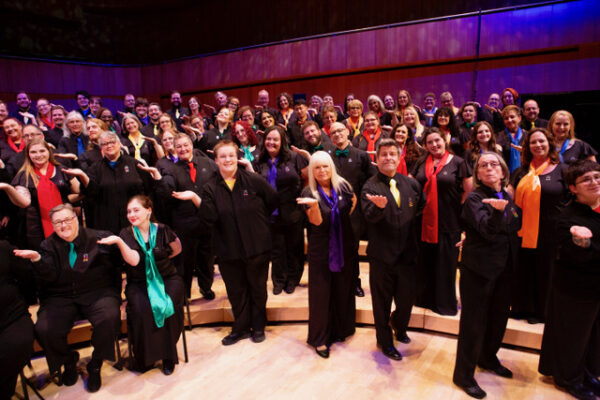
Q/A: Behind the Scenes of Disney PRIDE in Concert with its Producer
May 22, 2025
We discussed Disney PRIDE in Concert with Brannon Fells, the show's Creative Producer and the Director of Concert Program Development & Operations for Disney Concerts.Thursday, February 23
Visionary interdisciplinary composer talks to us about his musical background, his influences, and the upcoming world premiere of his new work honoring Ree and Jun Kaneko. The Pulitzer- and Grammy-nominated Akiho is challenging himself to learn and grow at every opportunity.
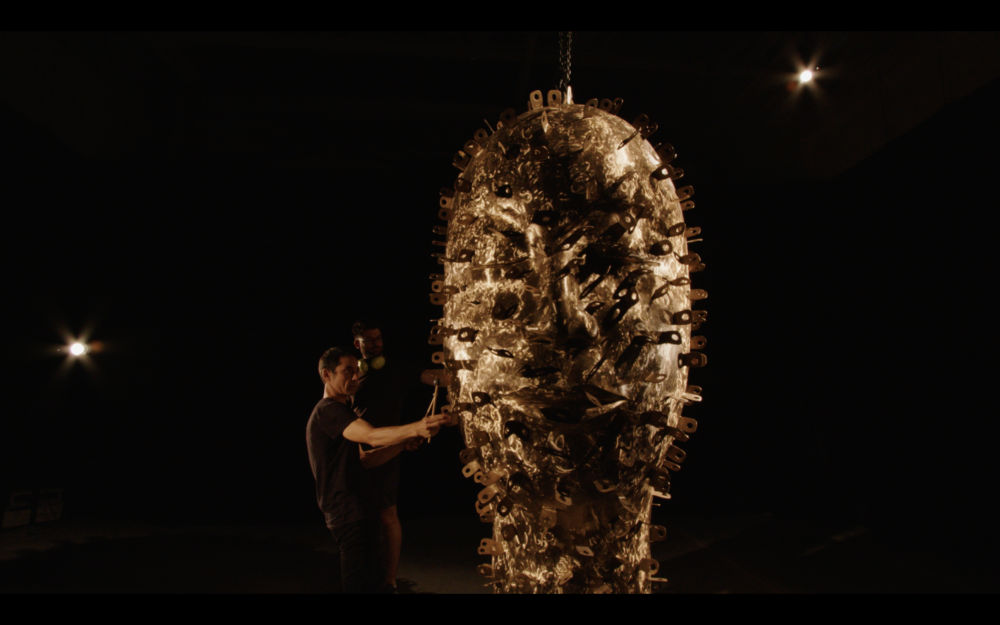
How did your upbringing influence your trajectory into the musical field?
When my older sister was in high school, she wanted to be a drummer in a rock band. She’s 10 years older than me and had a drum set, so I remember her teaching me Metallica and Guns N’ Roses and that really inspired me to explore becoming a drummer.
Were you always set on being a professional musician?
I was always set on music but never imagined that I would be involved in anything outside of rock. I had this ‘80s dream of being a rock star or performing more “mainstream” music and had very little exposure to classical, jazz, or anything outside of that. In high school, I was in the drumline, and it wasn’t until college that I really experienced jazz or Caribbean music. I remember skipping class to go practice the drums, and I was really obsessed with exploring rhythm since pitch wasn’t in my vernacular yet. I also did Drum Corps between the ages of 15 and 21 in the summers and it really kept me busy. Drum Corps was life-changing for me because it taught me about work ethic and how to apply that to my everyday life. Drum Corps requires precision, technique, rhythmic integrity, and so many other qualities that I bring to my music now, but primarily what I took away from that experience was the focus on dedication and the commitment that is required to create something quality.
Left: video featuring the 2000 Cadets Drum Corps International Show, Right: Cadets Drum line warming up in the parking lot before the performance. Andy Akiho can be seen in both videos.
What was your first encounter with the steel pan?
I started with steel pan at the University of South Carolina and then at the University of North Texas for a student exchange program where I was involved more in jazz. Then, I started traveling to Trinidad frequently and took part in the annual Trinidad Panorama competition in 2003, which is a music competition of steelbands. Interestingly enough, Panorama is similar to Drum Corps because steelbands are also comprised of 128 members and require the same type of precision and dedication. The high energy, high octane, infectious energy is also similar between the two, and I just loved that about these experiences. I found that this type of music with its energy, syncopation, and audience engagement really influenced me.
Above: Trinidad Panorama competition in 2003.
What drew you to the steel pan?
I was so drawn to the timbre and energy of the steel pan. I also found the harmonic vocabulary made more sense on the steel pan because it's arranged like the circle of fifths.
Talk to us a little bit about your mentors:
I had such a wide range of mentors and teachers because I didn’t grow up with the traditional conservatory education. I didn’t consider myself a composer until later in life, so I learned a lot from different teachers who had unique approaches. I even learned from photographers, writers, architects, and now…Jun Kaneko is a mentor as well!
My first composition teacher was Julia Wolfe; she was the one who encouraged me to start embracing the title of “composer,” because I had previously never thought of myself that way. And from that point forward, I had so many influential composition teachers (David Lang, Martin Bresnick, Ezra Laderman, Christopher Theofanidis, Steve Mackey, Paul Lansky, etc.) and I took something new from every single one of them. And in some ways, I’m glad that I didn’t have a traditional path to becoming a composer because I had such a range of musical and lived experiences that by the time I started composing, I was sure of what I wanted. And I felt free to explore my musical voice without being placed in any sort of artistic constraints. I still feel like I’m new at this, but for me, the most important thing is to be true to the most authentic version of myself. It’s a constant challenge but that’s the nature of the field - if I felt like I was making significant progress, I would be in the wrong field because I want to continue growing and improving all the time.
How has living in different parts of the world influenced your music?
I get a lot of inspiration from spending time in urban environments, where I can really integrate myself into the energy, culture, and feel of a city. And I’ve taken something from every place that I’ve been. I like writing in coffee shops, bars, and hotel lobbies, which allows me to experience that energy and stay focused. I know almost every coffee shop in the cities where I spend time…I can also go for a walk for inspiration, but that offers a different kind of perspective.
What has been the highlight (so far) of working with Jun Kaneko on the world premiere?
Having Jun’s positive energy physically at the studio has been instrumental in this process. We talked about all sorts of things from art, music, and even life. One thing I found interesting are his philosophies on color and space – many of which are parallel to musical concepts, because as musicians, we also think about harmony, pitch, and rhythm in terms of color and space. He talks about “Ma,” the Japanese concept referring to the space between, and it has been eye-opening to find parallels between our two art forms.
Another highlight was having Ree and Jun encourage me to tap on the sculptures and experiment with different sounds using malletes, bows, and sticks. It opened a whole new world of auditory capabilities and incorporated the artwork in such a unique way. Something that Ree and Jun believe, as do I, is that these sculptures want to sing, they want to make sound…and doing so gives the sculptures a new life. There is something spiritual about these sculptures and I can’t put my finger on it, but I think there is a parallel between some of the faceless heads and my own road to self-discovery, as a person and a musician.
Using the artwork as instruments is up my alley as a composer. I’m always experimenting with timbres, coming up with new sounds, and unlocking new possibilities, so this project plays into all those passions.
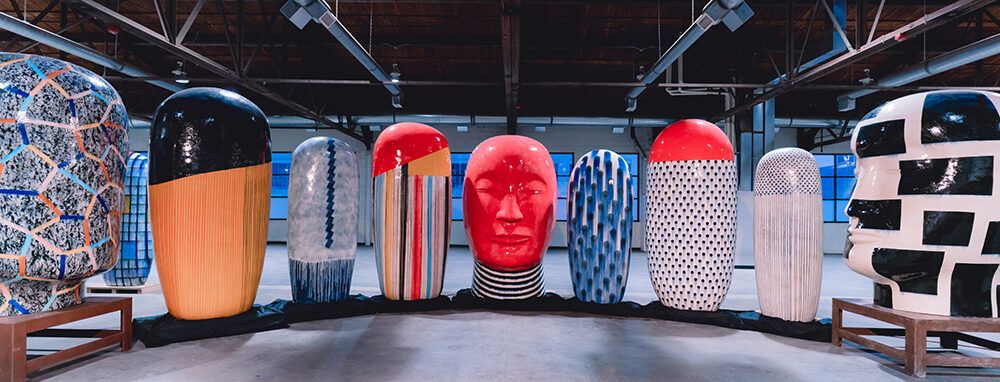
And what kind of impression has Omaha left on you and, by extension, the work itself?
I was running a lot, almost every day, while I was in Omaha, so I learned the city really well while I was there. But I also got to spend so much time with the symphony staff, the Kanekos, and was surrounded by Jun’s art every day, and that had a profound effect on me and on the piece. It started as a visual influence, and then it became more tactile when I was encouraged to tap on the heads or experiment with the sounds that the art can make.
I’ve explored Jun’s collection of works, and its evolution is a true testament to Jun’s dedication and is deeply inspirational for me. Not only because the artwork itself is a marvel, but also because I can see the decades-long process that went into creating it. As I’m working towards my own goals (in composition, in training for a marathon, and others), I have gained so much perspective and inspiration from seeing that consistent, long-term process firsthand.
Being half Japanese yourself, has working with Jun inspired you to explore more of your Japanese identity? In what ways?
My father came over from Japan about a decade after Jun came to the United States. And he was also very artistically minded, with a dream of applying his artistry towards the restaurant business. I didn’t start exploring my Japanese heritage until later in life because growing up, I really didn’t think about it – I was just a kid from Columbia, South Carolina. But connecting more with my father, my family in Japan, and meeting Jun has magnified this impulse to learn more. Meeting Ree and Jun at this time in my life almost feels like it was meant to be, because not only am I establishing myself professionally but I’m leaning more into my own Japanese roots, and their presence has been instrumental in both respects. They really feel like family to me.
There are also parallels between Jun’s defining moment of landing in LA and becoming the Jun Kaneko that we know today and my own moment of driving to New York City without a plan, with only my steel pan. His was more intense but I see those as defining moments for us both, and I’m only starting to grasp at how our paths compare.
What have you discovered about your Japanese identity through this process?
I’ve learned that identity shows up in the art and, specifically, the process of how the art is made. For example, this concept called “Kintsugi” – when things are broken, you put them back together by infusing them with gold. There is a lot of symbolism in this process for me, and it can be applied to my music but also, ultimately, to life as well. There is a lot to dig into, and I’m still discovering what this whole process has meant for me (because I’m still in it), but I know that I’ll look back on this and understand how meaningful and special it was.
What would you tell audiences about this piece?
The main thing that I want people to understand about this piece (and really all my music) is that it can mean different things for every person. I want everyone to be free to experience it the way that they want to experience it. And I want to remove myself from it as much as possible – I am the one who’s composing the piece, but after that I want it to have a life of its own, just like Jun’s art.
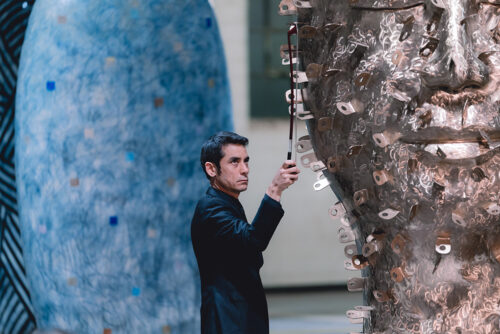
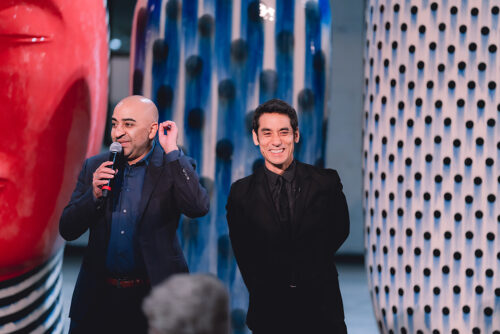
Love the Omaha Symphony?
Be the first to learn about new concerts, stories, and special offers.